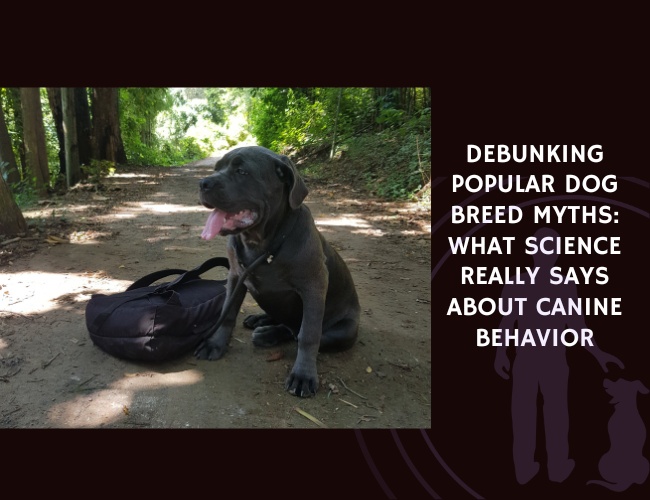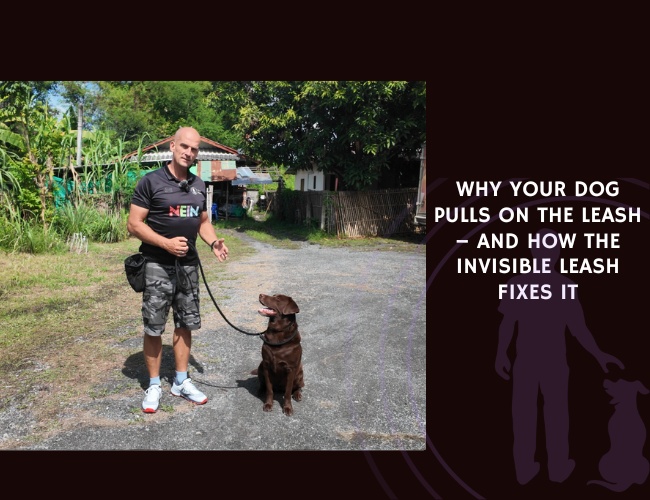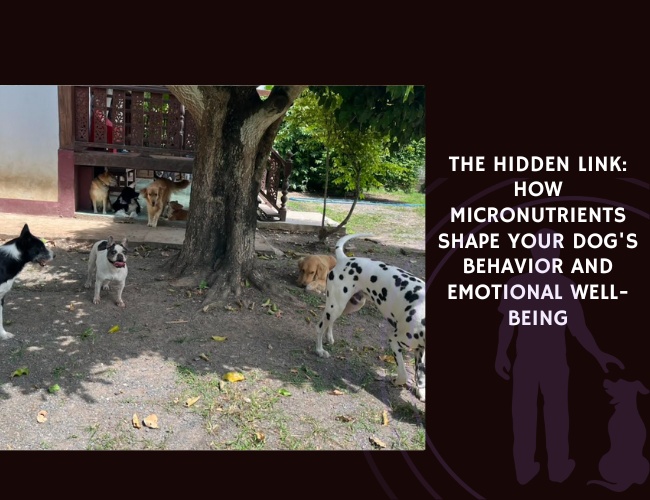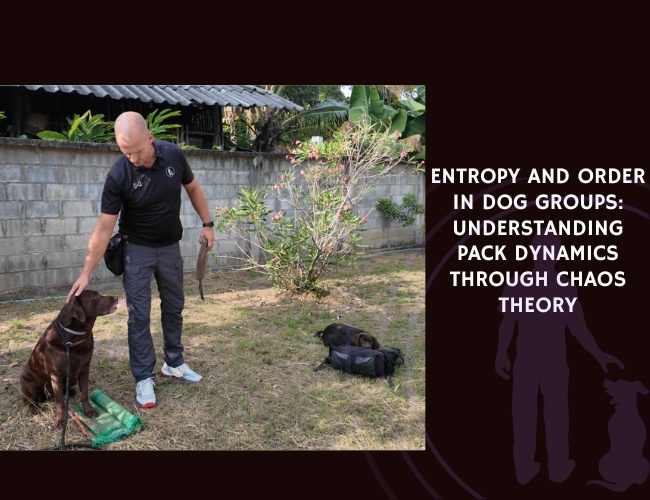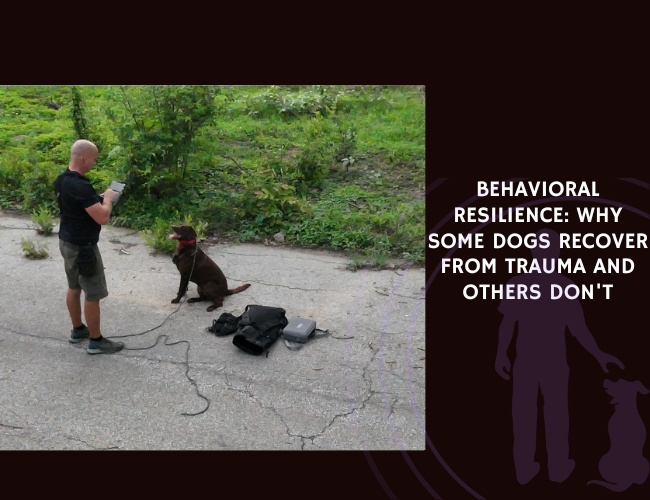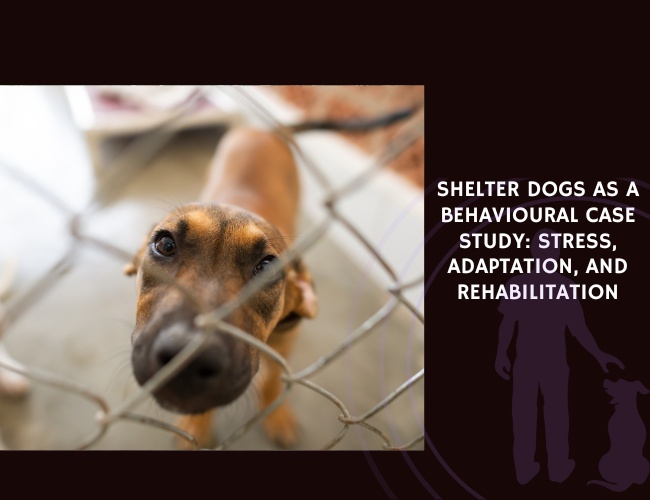Understanding Dog Breed Stereotypes
Definition and Origin of Breed Myths and Stereotypes
Breed myths are simplified generalizations about a dog breed’s behavior, temperament, or abilities. These myths often stem from anecdotal evidence, historical roles of the breed, or media portrayals. For example, the Pit Bull is often labeled as naturally aggressive, partly due to its history and media exaggeration. Similarly, small dogs are perceived as low-maintenance—another stereotype shaped by limited observations rather than a deeper understanding of canine behavior.
The Origins of Breed Stereotypes
Breed stereotypes have historical origins. For instance, some dogs were bred for specific purposes like hunting, guarding, or herding, which influenced their perceived traits. Over time, these characteristics became exaggerated and generalized. The role of word-of-mouth and cultural storytelling has also solidified these myths. Conversations about certain breeds often include tales of either heroism or danger, shaping commonly held beliefs that persist through generations.
Role of Media Portrayal and Cultural Biases in Perpetuating Myths
Media plays a pivotal role in perpetuating dog breed myths. Movies, TV shows, and news reports often portray particular breeds in a specific light. For instance, aggressive scenes featuring Pit Bulls and cautious guard duties by German Shepherds reinforce existing stereotypes. These portrayals can be very powerful, overshadowing individual dog experiences and behaviors.
Cultural Biases and Misinterpretations
Cultural biases also play a role. Many people base their opinions on dog breeds from anecdotes and communal folklore, leading to overgeneralization. Misinterpretations of behavior simply add fuel to the fire. A dog’s aggressive bark may be instinctual rather than dangerous, yet it is often misconstrued as a sign of inherent aggression. This misinterpretation is rampant, contributing to the negative reputation of breeds like the Pit Bull.
Why These Misconceptions Continue to Persist in Modern Society
Emotional Impact and Confirmation Bias
Emotions have a significant impact on the persistence of breed stereotypes. If someone has a negative encounter with a certain breed, they may generalize this to the entire breed. This emotional response is fueled by confirmation bias, where people look for evidence that supports their preconceived notions while ignoring information that contradicts them.
Social Media and Community Reinforcement
Social media further escalates these stereotypes. A single viral post can reinforce an existing stereotype or even create a new one. The community aspect of social media means that group biases are stronger, and dissenting voices are often drowned out.
Transition to Next Chapter
Understanding the origins and persistence of breed myths is crucial. It provides a foundation for debunking specific breed stereotypes with scientific evidence. Let’s explore common misconceptions about particular breeds and the evidence that dispels these myths.
Common Breed-Specific Myths Debunked
Examining the Pit Bull Aggression Stereotype with Scientific Evidence
Pit Bulls often get an unfair rap due to widespread stereotypes painting them as inherently aggressive and dangerous. However, scientific research tells a different story. Studies show that aggression in dogs is not breed-specific. A dog’s behavior, including aggression, is significantly influenced by factors like upbringing, environment, and training, rather than being an inherent trait of the breed alone.
One major issue perpetuating this stereotype is the misuse of statistics. Breed-specific bite statistics often fail to account for misidentification and environmental factors, leading to skewed perceptions of aggression in Pit Bulls. Moreover, research indicates that individual dogs within a breed can have vastly different personalities, further debunking the myth that all Pit Bulls are aggressive.
Debunking Misconceptions About German Shepherds and Family Compatibility
Another common breed stereotype is that German Shepherds are only suitable as working dogs and not as family pets. This misconception overlooks the versatility and adaptability of German Shepherds. While they are often seen in roles such as police dogs or service animals, they can also be affectionate and loyal family companions with the right training and socialization.
Families who have raised German Shepherds as pets often report positive experiences, noting their loyalty and gentleness with children. This underscores the importance of looking beyond the stereotypes and considering individual assessments over breed generalizations.

Addressing Myths About Small Dogs Being Low-Maintenance
Small dogs often carry the stereotype of being low-maintenance, easy pets. However, this notion doesn’t always hold true. Despite their size, small dogs can have high energy levels and require just as much training and exercise as their larger counterparts.
Owners of small breeds sometimes mistakenly believe that these dogs need less attention or can handle prolonged periods alone, which can lead to behavioral issues. Proper socialization, regular exercise, and consistent training are essential for small dogs to thrive, just as they are for larger breeds.
Debunking these myths helps potential pet owners make more informed decisions and fosters better relationships between dogs and their owners. Understanding that behavior is influenced by a combination of genetics, environment, and training, rather than breed alone, encourages responsible pet ownership.
Stepping away from breed stereotypes allows us to see dogs for who they truly are—individuals with unique needs and characteristics. This perspective shift is key to promoting fair treatment, improving adoption rates for misunderstood breeds, and enhancing the overall well-being of our canine companions.
The Science Behind Canine Behavior
Understanding canine behavior requires exploring both genetic and environmental influences. Gone are the days when dogs’ actions were solely attributed to their breeds. Today, science has shown that behavior is far more complex and nuanced.
Genetic vs. Environmental Influences
Dogs inherit certain traits from their parents, just like humans do. However, genetics is only part of the story. Studies have shown that while genes can predispose dogs to specific behaviors, environmental factors such as upbringing, training, and socialization play a significant role in shaping a dog’s actions. For instance, a dog’s environment can either mitigate or exacerbate inherited tendencies.
Consider the example of dog aggression. Research indicates that aggression is not breed-specific; it is influenced by factors like training, environment, and socialization (Clarke et al., 2013; Wells et al., 2012, pp. 369–377). This highlights the importance of looking beyond breed and examining the individual circumstances surrounding a dog’s behavior.
Individual Assessment Over Breed Generalizations
It’s tempting to make assumptions about a dog based on its breed. However, scientific evidence suggests that individual assessment is crucial. No two dogs, even within the same breed, are exactly alike. They can exhibit a wide range of behaviors based on their personal experiences and training.
For example, one German Shepherd might excel as a family pet with proper training, while another might exhibit more reserved behavior due to different socialization experiences. This variability underscores the need to evaluate dogs on an individual basis rather than relying on generic breed stereotypes.
Role of Training and Socialization
Training and socialization are pivotal in shaping a dog’s personality. Socialization involves exposing dogs to various environments, people, and other animals to help them become well-rounded and adaptable. Meanwhile, training provides structure and teaches dogs how to behave in different situations.
A well-socialized dog is more likely to be confident and friendly, regardless of breed. On the other hand, a lack of socialization can lead to behavioral issues such as fear or aggression. Training, often guided by rewards and positive reinforcement, helps instill good manners and appropriate responses.
For instance, the myth that small dogs are low-maintenance is readily debunked. Many small breeds, like Chihuahuas, require regular exercise and mental stimulation to thrive. Thus, successful dog ownership involves providing adequate training and socialization tailored to each dog’s unique needs and personality.

Transition
Recognizing the science behind canine behavior empowers owners to make informed decisions and fosters better understanding and treatment of all dogs.
This understanding paves the way to considering the larger implications of breed stereotypes, particularly how they affect adoption rates and shelter statistics.
Impact of Breed Stereotypes
The stereotypes surrounding dog breeds can have profound effects on both dogs and potential adopters. These impacts range from adoption rates and shelter statistics to the implementation of breed-specific legislation (BSL) and the implications for training approaches and owner expectations.
Effects on Adoption Rates and Shelter Statistics
Breed stereotypes significantly influence the adoption rates of dogs. Breeds such as Pit Bulls and Rottweilers often face discrimination due to their unfavorable reputations. Shelters frequently see these breeds stay longer and, unfortunately, sometimes never find homes. Negative stereotypes contribute to lower adoption rates and higher euthanasia rates for these breeds.
Beyond the direct impact on individual dogs, these stereotypes can lead to a broader issue within the shelter system. Shelters may become overcrowded with “unadoptable” dogs, resulting in limited resources for all animals. This cycle perpetuates the problem, making it harder for any dog to find a home.
Consequences of Breed-Specific Legislation (BSL)
Breed-specific legislation (BSL) aims to reduce dog attacks by banning or restricting certain breeds that are perceived as dangerous. However, these laws often lead to unfair and harsh consequences for the dogs affected. Laws targeting specific breeds can result in dogs being removed from their homes, euthanized, or confined more strictly than others. As noted by Geoghegan et al., BSL often fails to account for individual dog behavior and instead punishes breeds as a whole.
These laws not only impact the lives of the dogs but can also affect the relationships between dog owners and their pets. Owners of targeted breeds may face increased scrutiny and limitations on where they can live and travel, creating additional stress and hardship.
Influence on Training Approaches and Owner Expectations
Breed stereotypes also influence how dogs are trained and how owners perceive their pets. Positive and negative stereotypes can shape unrealistic expectations. For example, the belief that Golden Retrievers are naturally well-behaved might lead some owners to neglect proper training and socialization, setting the dog up for behavioral issues down the line.
Conversely, negative stereotypes can lead to overly harsh training methods for breeds like Pit Bulls, guided by the fear that these dogs are inherently aggressive. This reliance on stereotypes rather than individual assessment often results in improper care and training, ultimately harming the dog’s development and the owner-dog relationship.
Breaking the Cycle
Addressing breed stereotypes requires a concerted effort to educate the public on the importance of individual dog assessment and responsible ownership. Discussions on how to effectively break the stereotype cycle will guide the next steps in improving the lives of both dogs and their owners. Adjusting our perspectives and practices can significantly enhance overall welfare within canine communities.
By understanding how deeply these stereotypes affect various aspects of dog ownership and society, we can take meaningful steps towards positive change.

Breaking the Stereotype Cycle
Successful Public Awareness Campaigns and Their Outcomes
Successful public awareness campaigns have played a pivotal role in challenging and gradually breaking down harmful dog breed stereotypes. Campaigns like “I am not a Monster” and “Pet My Dog” have spotlighted real-life success stories of misunderstood breeds, showcasing them in a positive light.
These campaigns often:
- Share stories and photos of affectionate, well-behaved dogs that belong to stereotyped breeds.
- Encourage interaction between the public and these dogs to debunk myths firsthand.
- Provide educational materials to explain that behavior is influenced more by training, socialization, and environment than by breed alone.
For example, programs showcasing Pit Bulls as loyal family dogs have helped counteract the aggression myth. Such efforts have led to tangible outcomes, like increased adoption rates for targeted breeds and a more nuanced public perception of these animals.
Role of Education in Promoting Responsible Ownership
Education plays a crucial role in shifting public attitudes towards dog breeds. By focusing on facts and scientific findings, educational initiatives can dismantle long-standing myths and promote responsible pet ownership. Key educational approaches include:
- Workshops and Seminars: These can inform prospective dog owners about the importance of individual assessment over breed generalizations.
- School Programs: Educating children about humane treatment of animals helps foster a compassionate future generation.
- Online Resources: Websites and social media platforms can spread informative content widely, making knowledge accessible to all.
Effective education busts myths by reinforcing that dog behavior is largely shaped by environment, training, and socialization, not just genetics.
Importance of Individualized Training Approaches
A one-size-fits-all approach to dog training is ineffective and often contributes to the perpetuation of breed stereotypes. Tailoring training methods to suit the individual dog’s personality and needs yields far better outcomes.
Individualized training focuses on:
- Assessment of the Dog: Understanding the dog’s temperament, history, and preferences is essential in crafting a personalized training plan.
- Consistent Training Routines: Establishing consistent routines helps address specific behavioral issues and reinforces positive behavior.
- Environment: Creating a conducive environment for training that is free of undue stress or distractions is key.
Encouraging trainers and owners to assess dogs based on personality rather than breed can lead to better outcomes, understanding, and stronger bonds between dogs and their owners.
Examples of Successful Myth Debunking
Promotion of real-life experiences and success stories of individual dogs has shown distinct positive impacts. Families sharing their positive experiences with breeds that are commonly mislabeled as dangerous or unmanageable can shift public perception.
Some notable impacts of these debunking efforts include:
- Increase in Adoptions: By breaking stereotypes, more misunderstood breeds find homes, leading to happier dogs and owners.
- Reduction in Euthanasia Rates: Fewer dogs labeled as “dangerous” are unnecessarily euthanized.
- Improved Dog-Owner Relationships: Owners develop realistic expectations and can tailor training to their dog’s needs.
By focusing on education, individualized approaches, and sharing real-life success stories, we can break the cycle of harmful breed stereotypes and create a more understanding and compassionate society for all dogs and their owners.
Moving Forward: A Science-Based Approach
Guidelines for Evaluating Dog Behavior Beyond Breed Stereotypes
Understanding dog behavior requires looking beyond biased breed stereotypes and focusing on individual characteristics. Here are some science-backed guidelines to help:
- Individual Assessment:
- Evaluate dogs based on their individual personalities and temperaments rather than general breed traits. Each dog is unique, even within the same breed.
- Look for behavioral cues in context. Acknowledge that a dog’s actions are influenced by their environment and past experiences.
- Understanding Behavior Contexts:
- Realize that behavior can be shaped by training, socialization, and current environment. Genetics do play a role, but they’re not sole determinants.
- Misidentified breed statistics often lead to misunderstandings about breed behavior. Not all reported cases accurately reflect the true nature of the breed.
- Always assess dogs in a variety of situations to get a full picture of their personality and behavior.
- Importance of Training and Socialization:
- Adequate training and socialization are key in shaping a dog’s behavior. Focus on creating positive experiences in various contexts for all dogs.
- Regular exercise, mental stimulation, and consistent training can significantly influence a dog’s behavior.
- Consult Professionals:
- Work with dog behaviorists or trainers who understand behavior beyond breed stereotypes. They can provide tailored advice and strategies.
- Advocate for individualized training programs to address specific behavioral issues effectively.
Recommendations for Potential Dog Owners and Current Pet Parents
As you move towards adopting a dog or managing a current pet, keep these recommendations in mind:
- Research and Preparation:
- Learn about the specific needs of the dog you are interested in, focusing on individual requirements rather than breed generalizations.
- Prepare your home and family for the new addition by setting up a proper environment conducive to a dog’s well-being.
- Individual Focus:
- Choose to focus on a dog’s individual temperament, energy levels, and behavior. Avoid selecting or avoiding a dog purely based on breed reputation.
- Engage in informed discussions with shelter staff or current pet owners to understand the dog’s unique history and personality.
- Ongoing Commitment:
- Commit to continuous training and socialization. Remember, consistent activities and interactions are necessary for a well-adjusted pet.
- Invest time in understanding and catering to your dog’s specific needs, which include physical activity, mental stimulation, and proper medical care.
- Advocacy:
- Be an advocate for fair treatment of all dog breeds. Speak out against unfair breed restrictions and promote responsible dog ownership within your communities.
- Take part in or support public awareness campaigns that aim to debunk stereotypes and promote the adoptability of misunderstood breeds.
Future Directions in Canine Behavior Research and Policy Making
The field of canine behavior is ever-evolving, and focusing on these directions will further improve our understanding and policies:
- In-depth Genetic Studies:
- Continue researching the interplay of genetics and environment in shaping dog behavior. Specific focus on how genetic predispositions can be managed with proper upbringing and training to refine existing knowledge.
- Behavioral Studies:
- Conduct long-term studies to understand how different environments and training methods impact various breeds and mixes.
- Explore the role of early socialization and ongoing training on adult behavior to provide clearer guidelines to owners and trainers.
- Policy Improvements:
- Revise breed-specific legislation (BSL) to focus on responsible ownership rather than breed restrictions. Policies should be based on individual dog behavior assessments rather than breed generalizations.
- Support initiatives that ensure fair treatment of all dogs in shelters, ensuring that no specific breeds are unfairly targeted or discriminated against.
- Public Education:
- Expand public awareness campaigns to educate dog owners and potential adopters about the importance of looking beyond breed stereotypes.
- Promote success stories and real-life examples where dogs defy breed misconceptions and are thriving in loving homes.
By embracing a science-based approach and focusing on these aspects, we can create a more informed, compassionate environment for all dogs, ultimately ensuring their well-being and successful integration into our society.

Summary
Dog breed stereotypes are deeply ingrained in society, often shaping perceptions and influencing decisions about pet ownership. These stereotypes, however, are largely based on anecdotal evidence and media portrayals rather than scientific facts. For instance, breeds like Pit Bulls and Rottweilers are frequently labeled as aggressive, while Golden Retrievers are seen as inherently friendly and gentle. Yet, research indicates that behavior is not dictated by breed alone but is a complex interplay of genetics, environment, and training. Understanding these nuances is crucial for debunking myths and fostering a more informed perspective on canine behavior.
The origins of dog breed stereotypes can be traced back to the historical roles certain breeds played. Dogs bred for guarding or hunting were often perceived as aggressive or independent, traits that have been exaggerated over time. Media portrayals further cement these stereotypes, with films and news stories often depicting specific breeds in a particular light. This has led to widespread misconceptions, such as the belief that small dogs are low-maintenance or that certain breeds are unsuitable as family pets. By examining these stereotypes critically, we can begin to appreciate the individuality of each dog, regardless of its breed.
Addressing dog breed stereotypes requires a shift in focus from generalized assumptions to individual assessments. Scientific studies have shown that while certain genetic predispositions exist, they do not define a dog’s behavior entirely. Factors such as upbringing, socialization, and training play significant roles in shaping a dog’s personality. By promoting education and awareness, we can encourage responsible pet ownership and improve the lives of both dogs and their owners.

